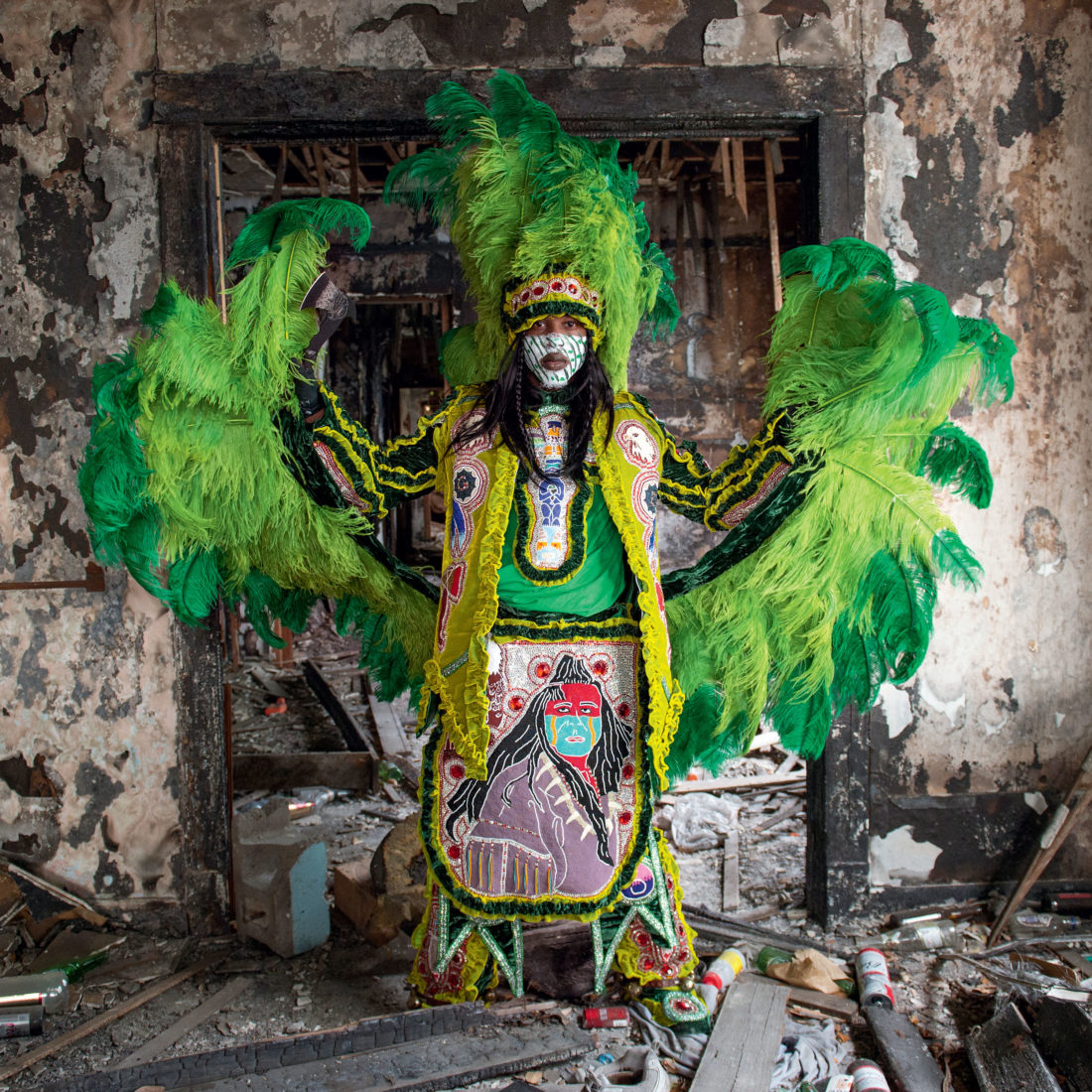By the time the first Mardi Gras after Hurricane Katrina rolled around in 2006, fewer than half of the Crescent City’s residents had returned. Photographer Erika Goldring, though, had stayed, and in the storm’s aftermath befriended Monk Boudreaux, the Big Chief of the Golden Eagle tribe of Mardi Gras Indians. These groups of revelers spend months making their elaborate, hand-beaded costumes, new ones each year, then parade on Mardi Gras, on Super Sunday—the Sunday closest to St. Joseph’s Day, in March—and on St. Joseph’s night, a tradition dating to the 1800s that is said to have begun as a tribute to the Native Americans in Louisiana who helped the enslaved escape. At Boudreaux’s invitation, Goldring has been photographing his tribe, as well as others, ever since. Boudreaux’s grandson Jwan, pictured above, is Spy Boy for the Golden Eagles. David Montana, pictured below, is the nephew of Tootie Montana, the now-deceased longtime Big Chief of the Yellow Pocahontas tribe. He has since formed his own tribe, Washitaw Nation. While the Indians’ parades have become more popular, for most of their existence “you really had to be in the know,” Goldring says. “The routes weren’t on the news.”

Photo: Erika Goldring
Yellow Pocahontas, 2009








